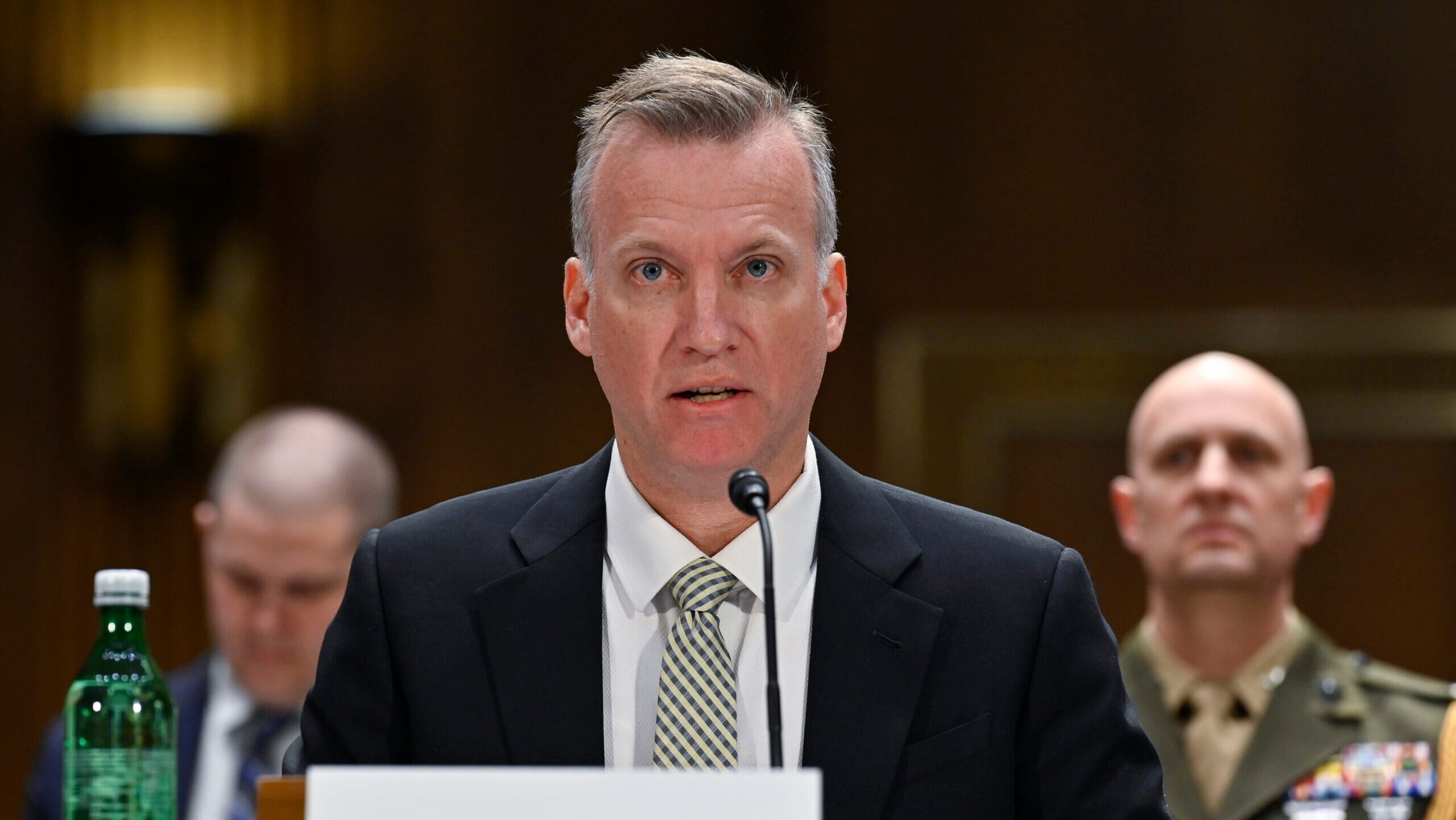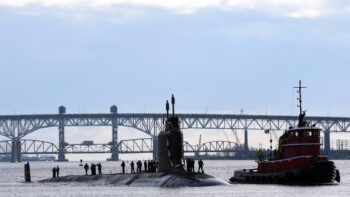
Undersecretary of the Navy Erik Raven testifies before the Senate Armed Services Committee on military recruiting challenges, Washington, D.C., March 22, 2023. (U.S. Air Force photo by Eric Dietrich)
In the exclusive op-ed below, Navy Undersecretary Erik K. Raven makes the case for why Congress needs to support the service’s fiscal 2025 budget request.
Our nation is at an inflection point. How we respond to the tremendous challenges and unprecedented opportunities we face today will determine the direction of our world and impact the security and prosperity of the American people for generations to come.
Deterring aggression on the seas is imperative to global stability and economic growth. To accomplish this, the President’s fiscal year 2025 budget request invests in key naval capabilities, including submarines and undersea technologies. The United States Navy has an incredible advantage in this domain, which our adversaries cannot hope to match — and the budget presented to Congress invests heavily in keeping it that way.
We must defend the rules-based international order which seeks to maintain peace and prosperity across the globe, and the best way to do that is to ensure the US Navy remains the world’s greatest. And to do that, Congress must pass the funding boost for our submarine industrial base as soon as possible, and move swiftly on the recent FY25 budget request.
This budget increases investments for both Columbia-class submarines which deter our adversaries from the horrors of nuclear war, and Virginia-class submarines which deter conventional aggression in oceans around the world. The recently-released shipbuilding plan demonstrates an unshakable commitment to delivering one Columbia and two Virginia-class submarines per year well into the future.
That’s why the FY25 budget, along with an emergency request for additional 2024 funding, includes more than $6 billion to invest in the workers, suppliers, shipyards and next-generation technologies to revolutionize and re-invigorate the industrial capacity to build these incredible vessels. This is a bold investment, greater than five times the funding called for in the FY24 base budget plan. It will create tens of thousands of well-paying American jobs over the next decade.
Shifting submarine production into high gear does not happen overnight. The submarine construction enterprise has been adding to the workload for almost 15 years, first doubling production of Virginia-class from one to two in 2011; then adding more capability and complexity to that submarine by adding the Virginia Payload Module in 2019; and finally, by beginning construction of the Columbia-class submarine in 2021.
Admittedly, it has not been easy for the enterprise to execute these increases. Where we should be delivering two Virginia-class submarines a year, we are currently only on pace to deliver 1.3. To achieve the Navy’s desired production rate of one Columbia plus two Virginias by 2028, this budget procures one Virginia-class submarine this year, rather than the two previously planned. The reason is simple: ordering another submarine this year would take longer to build, cost the Navy more, and risk further complications in the construction enterprise, as compared to allowing our significant investments to yield the efficiencies we need.
The modernized industrial base we are building is necessary to provide the best submarines for American Sailors, meet US national needs, and support our commitments under AUKUS — our trilateral security partnership with Australia and the United Kingdom. Today, April 18, will see for the first time ever three Royal Australian Navy sailors graduate from Submarine Officer Basic Course in Groton, CT. Each will soon be fully integrated into a US Virginia-class submarine to work, train, and operate as part of the crew. These investments will support the AUKUS partnership while increasing the readiness of our own fleet.
The United States is dedicated to providing three conventionally armed, nuclear-powered submarines to Australia beginning in the early 2030s. We shall also fulfill our promise to deepen cooperation with the United Kingdom’s undersea capabilities and further enhance our mutual defense with this generational opportunity.
Designing a shipbuilding plan is much like building a submarine: One must have both patience and determination. Strengthening undersea dominance for the US and our allies requires candid assessments of what needs to be done by both the Navy and industry, and the discipline to stick to a bold plan.
This year’s Navy budget and shipbuilding plan are the bold strokes that are required, and I ask Congress, industry, and the American people to join me in supporting the actions necessary to deliver on these important capabilities.
Under Secretary Raven serves as the Department of the Navy‘s Chief Operating Officer and Chief Management Officer. He is second highest ranking civilian within the Department of the Navy and is responsible for providing policy guidance and oversight for a wide range of defense matters, including strategy development, intelligence, space activities, and critical infrastructure sustainment. Additionally, he is responsible for business operations, performance management, and risk management of the department.






















